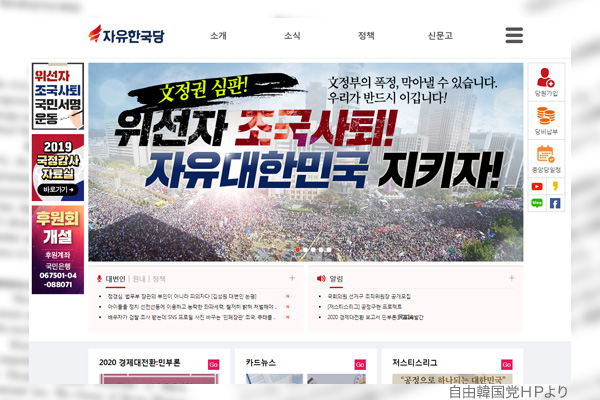On October 3 marking South Korea’s Gaecheonjeol National Foundation Day, 500,000 citizens rallied in Seoul calling for the resignation of President Moon Jae In and the arrest of Justice Minister Cho Kuk. In the largest rally in South Korean history, demonstrators carrying national flags of South Korea Taegukgi and Stars and Stripes filled a road between the Gwanghwamun Gate and the Seoul Station via the Seoul City Hall and the Namdaemun Gate.
The Liberty Korea Party, South Korea’s largest opposition party and one of the sponsors of the rally, claimed the number of participants as 3 million, which is an exaggeration and a political figure. The real number was empirically estimated at 500,000 by the Monthly Chosun magazine based on the space covered by the participants.
Largest anti-government rally in Korean history
On September 28 before the anti-government rally, the Moon administration’s supporters staged a rally before the Supreme Prosecutors’ Office to protest prosecutors’ investigations into various scandals involving Justice Minister Cho, challenging the rule of law. The ruling Democratic Party of Korea claimed the number of participants at 2 million, leading media organizations to report the figure without verification. Based on the space covered by the participants, the number was estimated at less than 50,000. The opposition party gave the exaggerated figure of 3 million for the October 3 rally in order to emphasize that the anti-government rally was far larger than the September 28 pro-government rally claimed at 2 million by the ruling party.
The previous record for the number of rally participants was 300,000 each for the December 2016 candle rally calling for the ouster of then President Park Geun Hye and the March 2017 Taegukgi rally against the impeachment of Ms. Park. The equal number was given by police based on the space covered by the participants.
YouTube videos of the October 3 anti-government rally transmitted live by the organizers showed a Japanese citizen having just arrived from Japan chanting through an interpreter, “Your enemy is not Japan but totalitarian communist forces.” Christian churches joined the rally en masse, singing hymns and offering prayers. The rally represented a national demonstration covering men and women of all ages.
As the sponsors emphasized the nonviolence and orderliness of the protest and asked participants not to bring anything that could be mistaken as arms, no participant carried iron pipes or firebombs. Miraculously, the 500,000-strong rally ended without any accident, with the site cleaned up, symbolizing the power of Korean civilization.
Sit-in demonstrations continuing in front of the Blue House
After the rally, participants marched to the Blue House presidential mansion, including some who launched sit-in demonstrations on the street in front of the presidential house. They were continuing the sit-in as of October 7, vowing to struggle to overthrow the Moon regime.
Prosecutors summoned the wife of Justice Minister Cho for interrogation on October 3 and 5. If prosecutors resist undue interventions by the president and justice minister and conduct investigations based on law and evidence, Mr. Cho may be interrogated and indicted in the near future. The 500,000-strong rally served as a powerful backup for prosecutors.
However, President Moon declared his intent to wait for judicial judgement on the Cho scandals, turning defiant that he would not fire Mr. Cho even if he were indicted. On October 5, leftist demonstrators calling for defending Mr. Cho squared off with conservatives urging prosecutors to arrest Mr. Cho on the street in front of the Supreme Prosecutors’ Office. Though having an option to fire Mr. Cho to defend his administration, Mr. Moon is set to protect the justice minister, giving priority to completing a totalitarian or socialist revolution to contribute South Korea to North Korea and China. The president is determined to put prosecutors under control through Justice Minister Cho and achieve a constitutional amendment to unify South and North Koreas under a federal system. To prevent such development, the Koran civilization side has launched a powerful counterattack.
Tsutomu Nishioka is a senior fellow and a Planning Committee member at the Japan Institute for National Fundamentals and a visiting professor at Reitaku University. He covers South and North Koreas.


